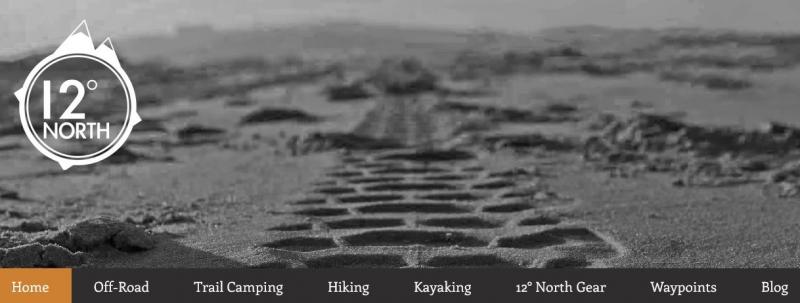12° North Industries
SITE SPONSOR

Joined: Thu Nov 23rd, 2017
Posts: 389
Name: Occupation: Vehicle Upfitter ... Interests: The great outdoors, nature, back to basics ...
Reputation Points: 389

|
I just wanted to put this out there because what I am reading between the rationalization of things is that "wheel spacers may be unsafe or damage things such as studs or bearings,.. etc"
If this is your thoughts, I truly understand any and all reservations but I'd like to clear the air on some matters of actual physics and common sense approach.
Are wheel spacers safe?
Yes. When properly installed they are just as safe as wheels installed without spacers.
Will wheel spacers cause my wheel studs to bend?
No. The load from a wheel is transferred to the axle/hub through the friction of the clamped joint, not through the wheel stud. A wheel stud can only bend if the lug nuts are not properly torqued, in which case the wheel is about to fall off, anyway.
The Physics of Keeping the Wheels On- As long as the wheel, hub, and spacer are stiff enough to prevent flexing and loss of clamp force, the cause of most wheel stud failures is under tightened lug nuts (not enough clamping force) or over tightened lug nuts (the stud has been stretched past it's elastic limit, so the clamping force goes away). Therefore, properly installed wheel spacers are perfectly safe.
- The wheel stud applies a clamping force that holds the wheel to the hub. When the lug nuts are tightened, the wheel studs stretch elastically, like very stiff springs. The lug nuts should be tightened until the stud is at 90% of its elastic limit. This will provide the greatest possible force to hold the wheel to the hub.
- The amount of clamping force at a joint is important because of the coefficient of friction (Cf). The more clamping force applied to the joint (in this case the joint between the wheel and the hub), the more force required to make the wheel slip relative to the hub. Unless the wheel slips on the hub, there cannot be any bending load on the stud.
- Coefficient of friction -- There is friction between the wheel face and hub face. This friction can be measured, and it is called the "coefficient of friction". The coefficient of friction (Cf) is the ratio of normal force, at the intersection of two surfaces, to the lateral force required to slip the bodies relative to one another. As an example, good street tires have a Cf of 0.9. This means that if there is a 100-pound vertical force applied to the tire, the tire can generate 90 lbs. of cornering force before it slides.
- When the car starts moving, the stress applied to the stud does not change appreciably, unless one of two things happens:
- The vertical component of any external force applied to the wheel is so great that the clamping force is not sufficient to hold the wheel in place, and it slips on the hub. At this point the stud is loaded in bending and in shear, and may yield, or even break.
- Some portion of the clamped joint, wheel, or hub is not stiff enough to prevent flexing, and allows the tension load on the stud to drop to zero. With no tension load on the stud, the clamped joint is no longer tight. The wheel can then move relative to the hub, and place a bending load on the studs.
- Inserting a wheel spacer between the hub and wheel changes nothing about these physics.
- The hub center of a hubcentric spacer does not hold the spacer on the hub or reduce the chance of stud failure. There is never any load on the lip of the wheel spacer. For there to be a load on the lip, the friction force in the joint must have been completely overcome. The lip on a hubcentric wheel spacer serves only as an aid for wheel installation.
- Increasing the length of the wheel studs to use a wider wheel spacer has no appreciable effect.
Now I know through draining inventories our supplier makes spacers up to what even I consider as ridiculous is 6.00" spacers. Now you would think the insanity of such a creature would be off the white coat charts. However, they serve a purpose apparently the most in the full size trucks like International, Kodiak's, and F450 and 3500 Dually's and up of all of the big three's inventory.
I think I can be quoted as saying I don't have a demographic or any use to keep these in our inventory but my point here is to quash some much needed reassuring of some safe guards especially considering most vehicles in the last decade or more are lug-centric and not hub-centric any longer.
And just to add as I hear this most often;
MYTH - "Wheels with the proper backspacing are the better solution. So, while one can safely use wheel [/url]adapters one would be wiser to get wheels with the correct backspacing for the vehicle and chosen tires."
TRUTH - a wider wheel with a lower offset does the exact same thing as a spacer, it just has more material on the back of the wheel where it bolts to the hub, same as a spacer would be.
I would also politely suggest checking out these other references as well.
[url=https://wheelonroad.net/are-wheel-spacers-safe/]Are Wheel Spacers Safe? Yes! But When And How?
As always, we'll be here to help or answer questions..
____________________
North Industries
Las Vegas, Nevada 89118
Web http://www.12degnorth.com

|





 1 2 3 4 5
1 2 3 4 5 


 1 2 3 4 5
1 2 3 4 5 
